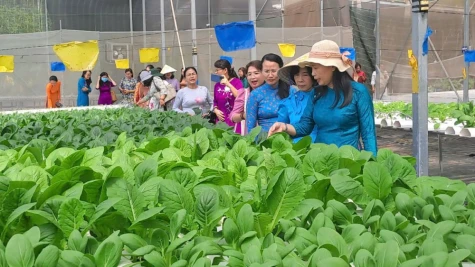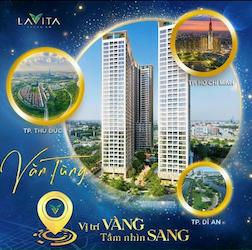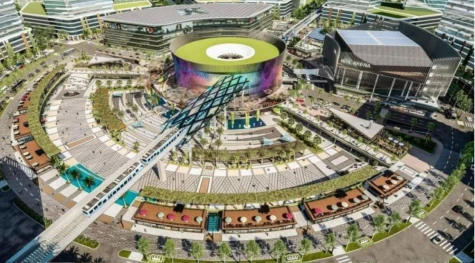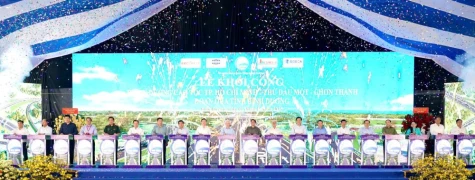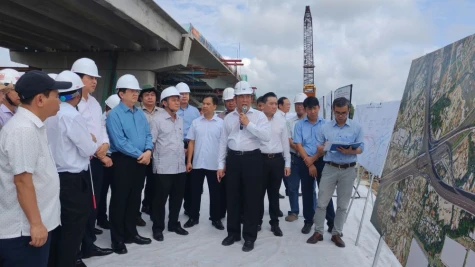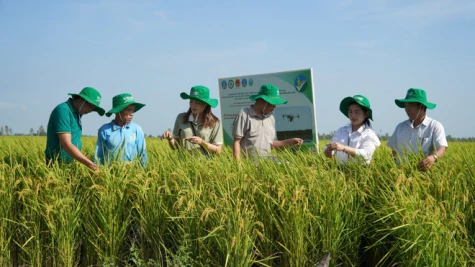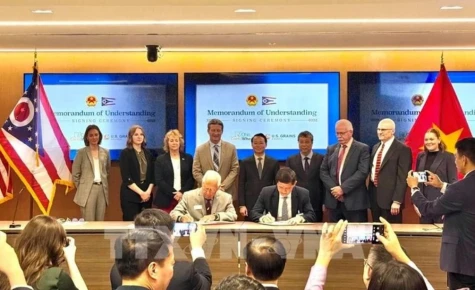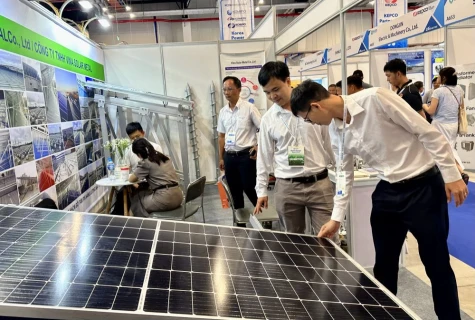Binh Duong recognizes infrastructure development as a strategic breakthrough and a focal point for socio-economic advancement, particularly in regional transport infrastructure. The initiation and rapid progression of key projects, along with their inauguration and operationalization, contribute to the establishment of a cohesive and modern infrastructure, facilitating a significant leap forward for the province in this new era.

Traffic takes precedence to facilitate progress
In 1997, following its separation from Song Be province, Binh Duong committed to achieving a significant transformation in economic development and infrastructure, prioritizing transport infrastructure as a foundational element. Over the past 28 years, Binh Duong has concentrated on and actively invested in cohesive and integrated infrastructure. This commitment was clearly articulated when the provincial Party Committee issued Program No. 42-CTr/TU on August 2, 2021, which emphasizes the development of transport infrastructure in alignment with urbanization efforts, the establishment of a smart city for the period of 2021-2025, with orientations extending to 2030 and a vision for 2045. The provincial People's Committee has executed numerous plans to construct essential and prioritized transport projects and initiatives.
Binh Duong has been diligently working to enhance connectivity within the Southeast region and advance the Southern Key Economic Zone. Specifically, the province is focused on the timely completion of the primary segments of Ho Chi Minh City Ring Road 3 and Ring Road 4, which traverse its territory. These roads will be directly integrated with key intra-provincial routes, such as the My Phuoc - Tan Van road, linking to the seaport and international airport. Notably, the construction of these roads is facilitated through the mobilization of resources and the attraction of investment from the province's leading enterprises, significantly alleviating the financial burden on the budget.
Dr. Le Xuan Thanh, Scientific Secretary of the Central Theoretical Council, emphasized that Binh Duong should concentrate its resources on regional development investments. This includes mobilizing resources through regional cooperation with countries, territories, provinces, and international partners. Additionally, Binh Duong must implement capital mobilization strategies by leveraging land adjacent to infrastructure projects for auction, in accordance with planning, to generate funds for infrastructure development. |
To foster inter-regional development, Binh Duong will prioritize investment and the construction of essential routes in 2023, linking raw material and production areas to the seaport system for efficient goods circulation. This includes the upgrading and expansion of National Highway 13, the construction of the Bac Tan Uyen - Phu Giao - Bau Bang dynamic road, and the development of Ring Road 3 and Ring Road 4 in Ho Chi Minh City, alongside the advancement of the Ho Chi Minh City - Thu Dau Mot - Chon Thanh Expressway Project. In 2024, Binh Duong will inaugurate and operationalize significant projects, such as the Bach Dang 2 Bridge, which connects Binh Duong province with Dong Nai province, and the Bac Tan Uyen - Phu Giao - Bau Bang dynamic road. Beginning in early 2025, Binh Duong will initiate the key project for the Ho Chi Minh City - Thu Dau Mot - Chon Thanh Expressway section traversing the province. Additionally, Binh Duong is committed to accelerating the implementation of Ring Road 3, Ring Road 4 in Ho Chi Minh City, the Ho Chi Minh Road Project, and the Chon Thanh - Duc Hoa section. These vital national routes, once completed and operational, will alleviate traffic congestion in major cities, enhance connectivity among satellite cities, effectively leverage local advantages, and establish links between Binh Duong and the Southeast and Central Highlands regions.
Establishing neo generation industrial corridor
Binh Duong has established a robust infrastructure foundation, complemented by ample space designated for future development initiatives. This represents a significant achievement in the province's planning and execution processes. Binh Duong has emerged as a model of exemplary development in Vietnam, influencing numerous localities nationwide through the province's leading enterprises. Notably, the quality of Binh Duong's infrastructure continues to improve, with industrial parks being developed in a sustainable and environmentally friendly manner, integrated with urban areas for professionals and social housing for low-income residents. These industrial-urban ecosystems have fostered equitable access to social infrastructure, healthcare, and educational systems for all societal classes.
For the time to come, Binh Duong will persist in proactively collaborating with national development programs, the Southeast region, and neighboring localities to enhance transportation connections. This includes vital links to seaports (Cai Mep - Thi Vai, Can Gio), international airports (Tan Son Nhat, Long Thanh), and international border gates (Moc Bai - Tay Ninh, Hoa Lu - Binh Phuoc). The focus will be on developing an international infrastructure connection system to bolster its position, engage in the global production and service chain, and establish itself as a preferred destination for global enterprises in the sectors of industry, high technology, and industrial services.
To achieve a significant advancement in economic development and regional connectivity, Binh Duong is committed to enhancing its transport infrastructure, with an emphasis on multimodal transport systems that integrate various transportation modes. Furthermore, the province is dedicated to developing innovative, cost-effective multimodal logistics and transportation solutions. By 2025, the provincial People's Committee mandates that sectors devise more fundamental and impactful strategies to facilitate a breakthrough in infrastructure development; expedite the construction timelines of key projects and infrastructure with spillover effects, linking regions such as Ring Road 3, Ring Road 4 of Ho Chi Minh City, the Ho Chi Minh City - Thu Dau Mot - Chon Thanh Expressway, and the expansion of National Highway 13. The objective is to achieve 3,000 km of expressway by the end of 2025 and 5,000 km by the end of 2030 nationwide. A primary focus for Binh Duong is the development of its transport infrastructure system, aiming to transform the area into a modern and intelligent city. This includes prioritizing the construction of strategic infrastructure projects that ensure robust connectivity, expanding the connectivity landscape, and establishing a new generation industrial belt along the highways, alongside the development of smart industrial parks and the attraction of high-tech investments. Binh Duong is also investing in the enhancement of internal provincial infrastructure projects and regional connectivity.
During the recent 22nd Session (special session), the provincial People's Council reviewed and approved the Project for mobilizing resources to implement the Urban Railway Line No. 1 Project (Binh Duong New City - Suoi Tien, Ho Chi Minh City). Additionally, the Council decided on the investment policy for the Project to construct a road along the Saigon River, extending from National Highway 13 (near Vinh Binh Canal) to Vinh Phu 40 Road. The initiation and accelerated progress of these key projects, along with their inauguration and subsequent utilization, will significantly contribute to the establishment of a cohesive and modern infrastructure, facilitating a transformative development for the province in the new era. |
Reported by Phuong Le - Thanh Tuyen - Translated by Vi Bao











